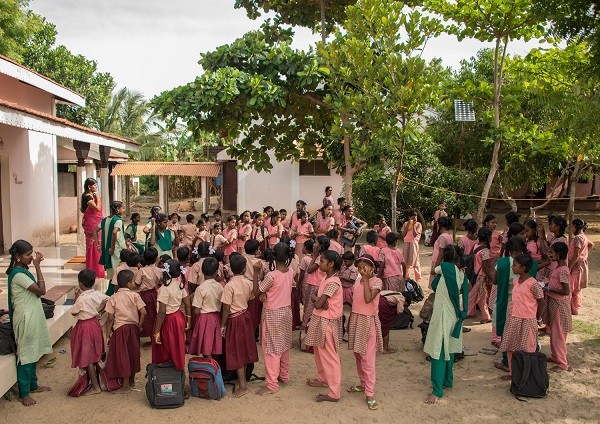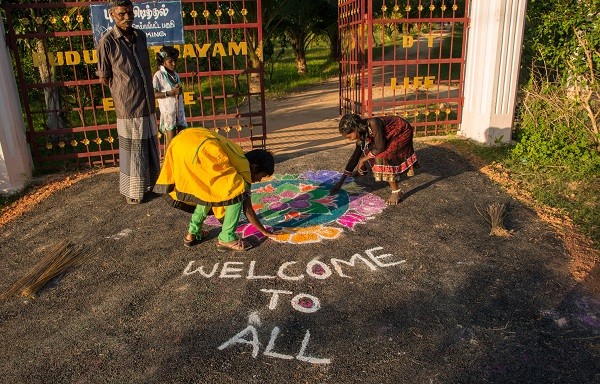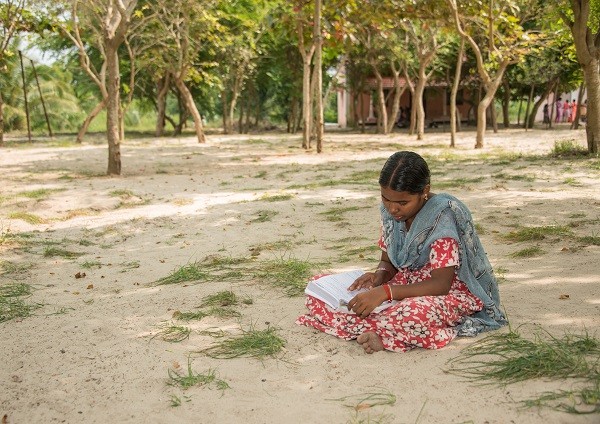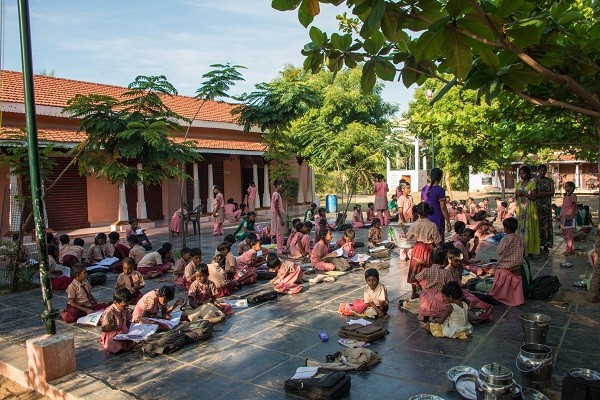Children’s Village
Where and what
Our children’s village – Enable For Life – is seven miles outside Trankebar in Tamil Nadu, in south-eastern India. Enable has bought a large piece of land (about 100,000 sqm), where a small children’s village with ten houses is slowly being developed. The first eight are already built and the girls have moved in. There are 15 girls in each house. The houses are spacious and each has a kitchen and bathroom. Here the girls live together as a normal Indian family with school and homework, play and duties. In addition, we have built a large assembly hall of 100 sqm, a guesthouse / office, a multifunctional house, a kitchen house and a very small house at the entrance for the guard.


For whom
Our little village is only for girls. In India, girls are abandoned ten times as often as boys. This is because the parents have to pay an expensive fee when the girls get married, and also because it is the boys who take care of the parents in their old age. Girls are also very vulnerable. If they are unwanted, they risk being killed as newborns – a practice that, fortunately, is disappearing. If they end up in the street, they are often kidnapped to prostitution. In addition, experience shows that if you educate a man, you are educating one person. If you educate a woman, you are educating a whole family.
Educating women is by far the most effective form reducing birth rates.
Caste
Although the caste system has been abolished in India, it is still present in some areas. Most girls who join us are from the lowest castes. They form the poorest and most disadvantaged population in India. If we do not know what caste a child belongs to, they are under Brother Sebastian’s caste, which is relatively low. This has the advantage that it is easier to get them to university as India has introduced a rule that all universities have to admit a certain percentage of students from the lower castes.


Education
The girls go to the best possible school, where there is a great emphasis on learning English. The girls also learn the importance of good hygiene. This applies to both personal hygiene and to cooking. At the same time, they also learn about a healthy and comprehensive diet.
Religion
The girls keep the religion they have when they come to the village. There is no conversion.
The future
The plan is to build one to two houses every two years until all ten houses are built
How far are we
The first 8 houses, guardians and guesthouses, a community kitchen, a meeting house, a small house for the guards and the multi purpose house are all built. The first 21 girls moved into the village in May 2009 and have started school. We now have 100 girls aged 5 to 18, of whom 4 are in higher education.
Partner in India
The daily operation is carried out by the St. Joseph Development Trust (SJDT). SJDT already operates 4 other orphanages and also has a micro finance bank, self-help programs for women, etc. SJDT selects the girls who come to us.

